Fans will fall under the spell of Scream Factory’s new collector’s edition Blu-ray release of John Badham’s 1979 film, “Dracula”.
If you asked me to name my favorite monster, I might respond with The Wolf Man or Godzilla, or possibly a more modern horror creation like Jason or Freddie. But the reality is my true monster love is my first — Dracula. When I was younger, I was quite the Dracula snob, which was the basis of my dislike for John Badham’s 1979 Dracula. Now that I’m older and less anal retentive about how the character is interpreted, I revisited Frank Langella’s performance as the legendary Bram Stoker creation, Dracula.
THE MOVIE
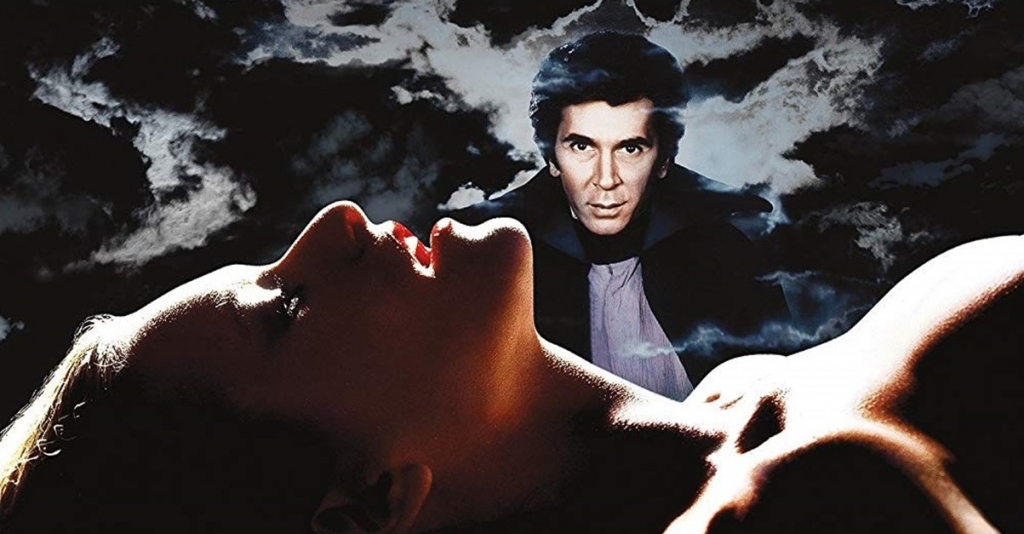
It is pointless to recap a story that’s been told so many times, and everyone knows the basics even if they never read Stoker’s novel or seen any of the hundreds of movies and plays based on Stoker’s titular character. In simple terms, Dracula comes to England in search of fresh blood, buys a crumbling estate near the story’s heroes, begins to feed, and faces off against his human enemy, Dr. Van Helsing.
John Badham and writer W. D. Richter made some bold choices in the making of the movie. There’s no one source for the material as they pulled from the source novel, the earliest versions of the stage play script, and their own material. Badham also relied on actor Frank Langella for the shaping of Dracula’s character. Langella had performed the part for over 400 shows before getting the movie offer, and had it written in his script that he had creative control over the look and dialogue of Dracula.
Badham and Richter streamlined the characters, specifically eliminating Mina’s suitors from the story.
They also deepen the characterizations of the supporting characters, making Jonathan Harker and Lucy Seward richer, fuller characters.
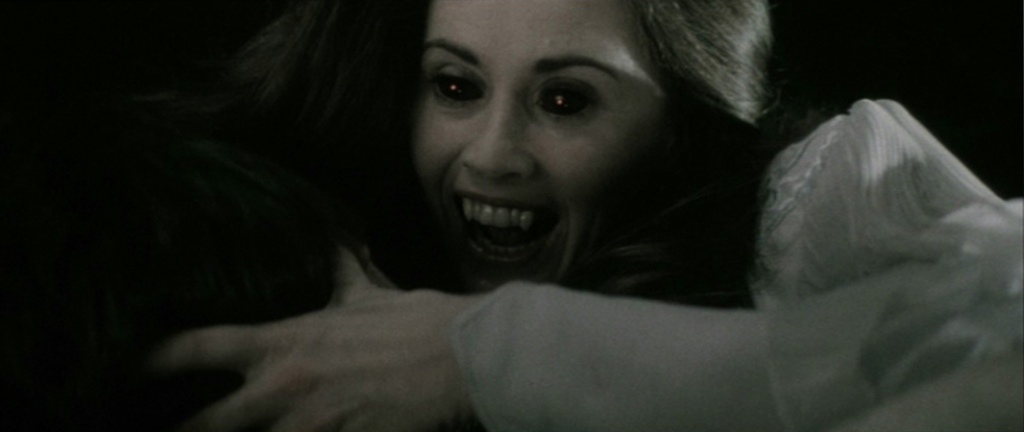
For clarification, one of the controversial changes was to switch the names of the female leads. Lucy becomes Mina, and Mina becomes Lucy. The rationale, according to film historian Constantine Nasr was that Mina was more of a European name befitting her Van Helsing lineage, and the name Lucy was traditionally an English name.
The exact year of the movie is left unanswered, but it’s generally at the start of the mechanical age, when motorized cars were just beginning to appear but still shared the road with horse and carriages. Mina and Lucy are women on the verge of the women’s revolution, but still with a foot in the traditional English constraints. Dracula is set about the same time as an English woman protesting treatment of women stepped in front of horses at the Royal Races, while the Woman Suffrage Movement was just starting in the United States.
Lucy is a woman stuck in both worlds. Stuck with the constraints of English society but yearning to be independent. Her attraction to Dracula is just as much about her attraction to him sexually, as it is about the chance to explore her freedom and gain independent power.
Jonathan Harker is elevated by this script.
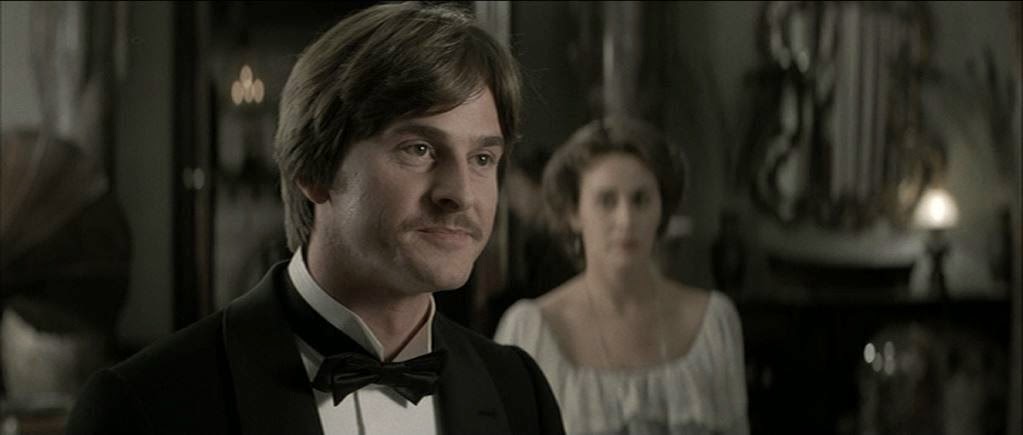
In most interpretations of Dracula, Harker is traumatized by his visit to Castle Dracula and sidelined for most of the story while watching his fiancé fall under the spell of Dracula, and waiting for Van Helsing to tell him what to do. Badham has helped shape a character more in control of his own story even as he watches his idea of a perfect romance crumble before the sheer power of Dracula’s will, and Lucy’s eagerness to be free.
The most notable name in the cast is Laurence Olivier as Dr. Van Helsing, but the best casting decision was Frank Langella. Almost every crew member interviewed about the production of Dracula has a comment about Langella’s control over the character’s portrayal. They do so, not as complaint, but as a show of respect for Langella’s commitment to the role.
After revisiting Badham’s Dracula, I realize that Langella’s decisions and Badham allowing him the freedom to create the character, give fans a unique take on the character. He’s not brooding or conventionally frightening. But Langella’s Dracula exudes power and sensuality. He has an aura of having lived for centuries and looking down on mortals as playthings for his amusement.
Scream Factory, through its recent release of Dracula on Blu-ray, has allowed me to revisit the movie I once held a lot of disdain for.
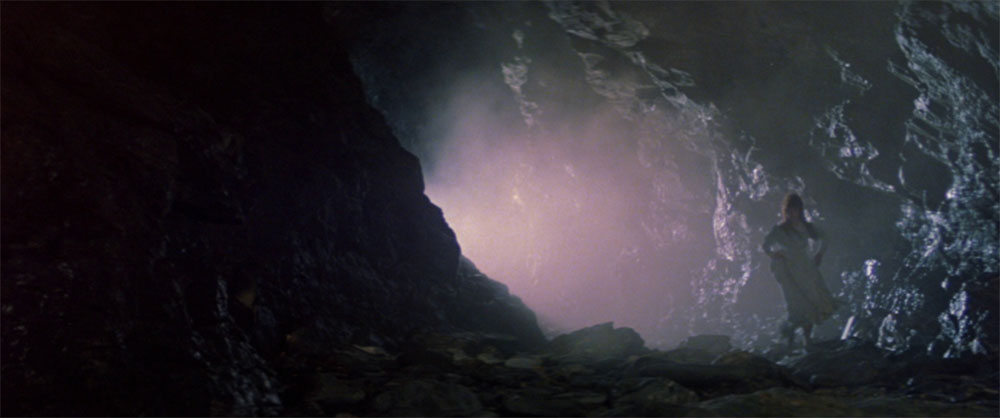
For this review, I watched the movie three times, and found that even with the core story changes, I liked what Badham and his team had done. Even the psychedelic love-making scene.
Dracula (1979) is deserving of higher praise than I normally see from fans. When we speak of favorite Dracula movies, the conversation always turns to Bela Lugosi, Christopher Lee or, more recently, Gary Oldman. These actors have all cemented their legacy playing one of the most famous fictional characters in history.
It’s time to add Frank Langella to that list and give this great film the respect and attention it so richly deserves.
THE DISCS
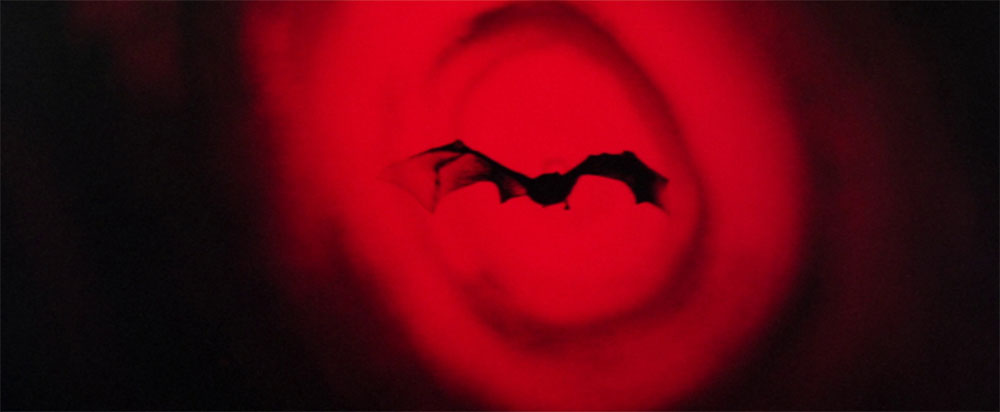
Scream Factory has absolutely packed this Collector’s Edition release with special features. The only glaring omission is an interview with actress Kate Nelligan, but that’s not the fault of Scream Factory. Constantine Nasr mentions during his audio commentary that Nelligan rarely, if ever, speaks of Dracula and hasn’t given any interviews about her career in some years.
The first disc contains the Director’s Preferred Cut with the desaturated color timing. The desaturation gives the film an almost black and white look, which harkens back to the look of the original Universal Horror monster movies.
There are a handful of interviews with the crew of Dracula, and all give honest, if sometimes blunt, appraisals of the work on the movie. Editor John Bloom even goes into detail about clashes he had with Badham about the direction of the movie.
In all the interviews, each crew member speaks glowingly of Laurence Olivier and touch on his illness, which affected his work.
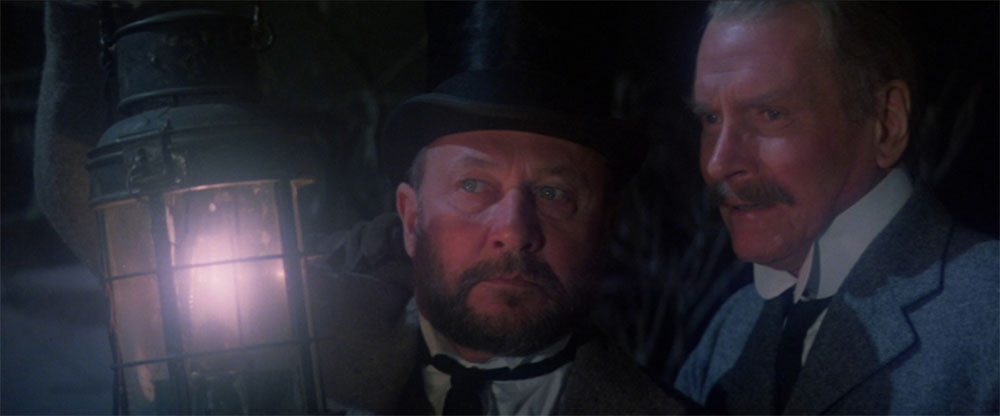
Many thought he might die during production because of how much his illness had taken from him physically. One touching story during the interview with Production Manager Hugh Harlow is about taking Olivier to local pubs so he could relax with his favorite drink, a gin and tonic.
The desaturated cut of the film includes an audio commentary by John Badham.
There is no wasted space on his commentary, and he fills it with memories of working with cast and crew on Dracula. Badham does go into some detail about how many of the in-camera effects were accomplished and has fond recollections of working with the cast.
One story that comes up in the commentary, the featurette and the interviews is what it’s like working with Donald Pleasance.
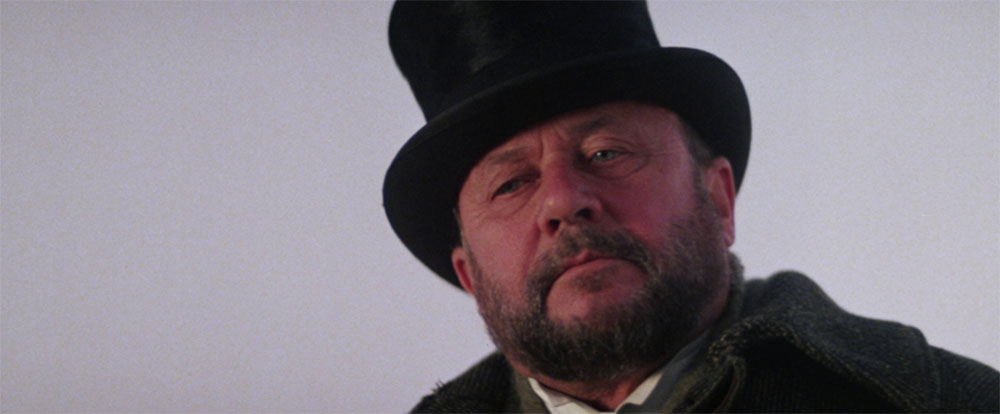
All remember him as a lovely man, but as Langella puts it, Pleasance was known as a “handkerchief actor.” This means Pleasance is always doing something in frame to draw attention to himself, even when his character is not the focal point of the shot. In Dracula you’ll notice that Doctor Seward always has a bag of hard candies. He’s constantly popping the candy into his mouth. He’s even holding the bag up in the promotional photos of Doctor Seward.
Pleasance does this so that eyes are drawn to him when he’s on screen and he puts a candy in his mouth. It’s his way of ensuring that his character will always have attention on him.
During the commentary, Badham also discusses the decision to show the reflection of Mina in a pool of water after she’s been turned to a vampire. Originally the shot was included because Badham thought it was a visually cool way to introduce vampire Mina to the audience. But he was reminded that vampires do not cast a reflection, and I think you’ll agree he came up with a rather unique way to explain away the reflection.
The features on disc one will give fans an incredibly deep dive into the making of the film and its lasting impact on the character.
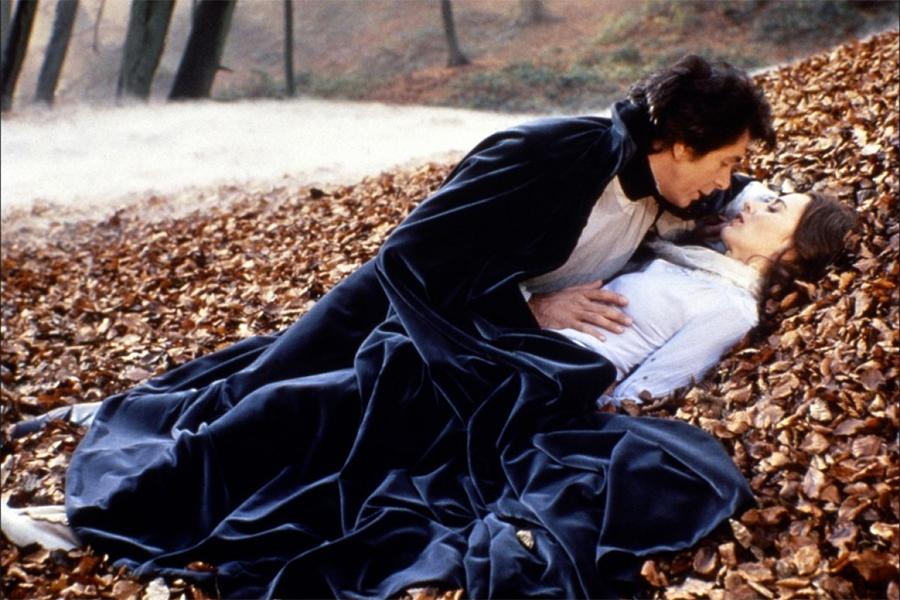
The second disc contains the new 4K scan of the theatrical color timed print of Dracula. The theatrical version of the movie had not been released on home video since the early 1990s. For fans like film historian Constantine Nasr, who does the audio commentary on this version of the movie, this release is a true treat from Scream Factory.
For fans of Scream Factory’s “Universal Horror Collection” releases, the name Constantine Nasr is recognizable. Nasr has done several audio commentary tracks for those Universal releases and is always quite knowledgeable of the era and movies he’s discussing.
His work on Dracula (1979) is no different. He pulls a lot of information about the production of the movie from years of research and interviews he had done about Dracula for the Little Shop of Horrors magazine. There is some crossover information with the commentary track from Badham, but Nasr covers more behind-the-scenes stories than Badham does.
Nasr does touch upon the reasons behind the Mina/Lucy name swap.
He also talks about how this 1979 production was one of the first times Universal Pictures put a substantial budget behind a classic horror movie character.
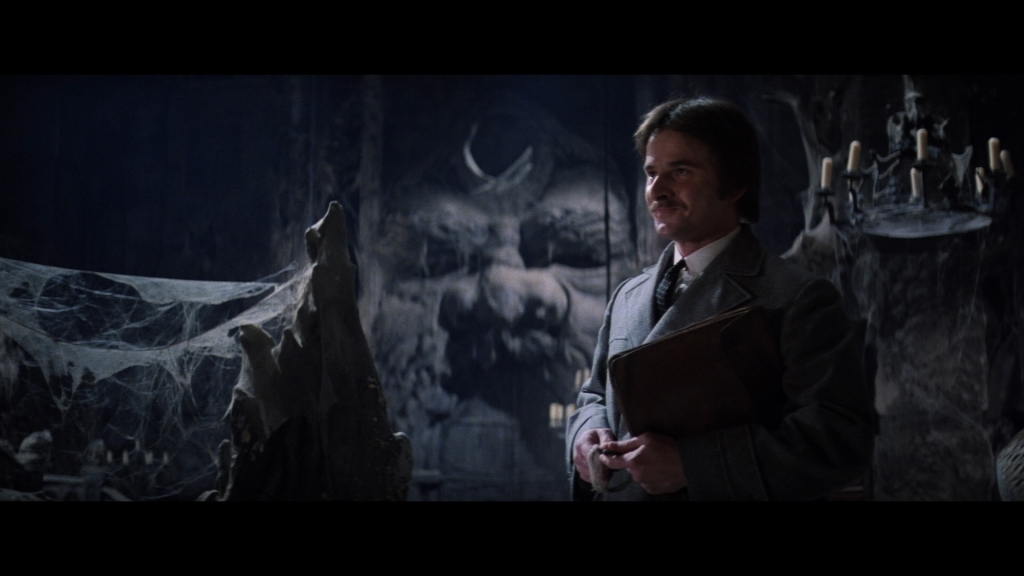
One of the more interesting stories was about early drafts of the script which had Dracula summoning Van Helsing to England after the death of Mina. This plot point hints that Dracula was quite aware of the professor, and wished to engage a potential enemy head on. Obviously, this idea was dropped as the script was re-written, but the potential of this idea is intriguing.
As with the “Universal Horror Collection” commentaries, Nasr is humorous, engaging, and always informative. His commentaries are the next best thing to taking college courses about Universal Horror.
Nasr’s summation of his commentary on Dracula may be the best bit he’s recorded for a movie, and I highly suggest listening to his commentary on the movie.
THE VERDICT
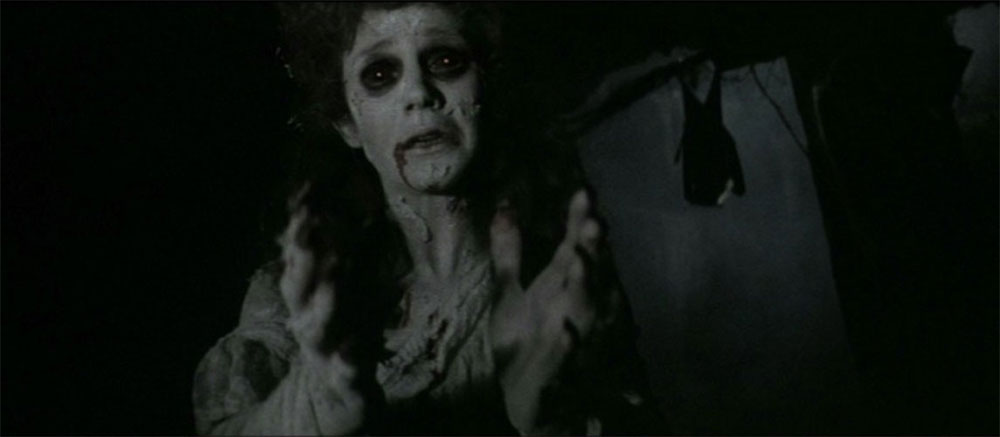
Scream Factory has been releasing many Hammer and Universal horror pictures to Blu-ray over the past couple of years, and a release of a box office disappointment like Dracula (1979) shouldn’t be a blip on a radar for fans.
If you’re thinking of passing this release by, I urge you not to. Scream Factory has done one of their best jobs pulling this collection together. The interviews, the commentaries, the making-of featurette, and the two versions of the movie are a goldmine of Dracula treasures. Even if you were disappointed in this version of Dracula, as I once was, this release is sure to change the way you view Dracula and Frank Langella’s performance.
Take One
Take Two
THE SPECIAL FEATURES
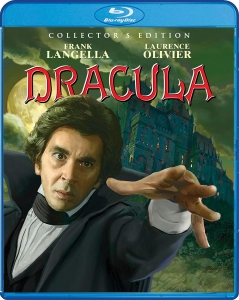 Disc One (1991 Director’s Edition):
Disc One (1991 Director’s Edition):
- New introduction with director John Badham
- Audio commentary with director John Badham
- Director preferred desaturated color timing
- Interview with screenwriter W.D. Richter (30 minutes)
- Interview with editor John Bloom (20 minutes)
- Interview with assistant director Anthony Waye (15 min)
- Interview with production manager Hugh Harlow (20 minutes)
- Interview with camera assistant Jim Alloway (6 minutes)
- Interview with make-up artist Peter Robb-King (25 minutes)
- Interview with hair stylist Colin Jamison (4.5 minutes)
- “The Revamping of Dracula” — featurette
DISC TWO (1979 Theatrical Version):
- New audio commentary with film historian/filmmaker Constantine Nasr
- 4K scan of the best available original film elements
- Original theatrical color timing
- Theatrical trailer
- Still gallery
- Radio spots
- Reversable cover artwork
- English SDH subtitles
For more information and to purchase Dracula, visit Shout! Factory here.


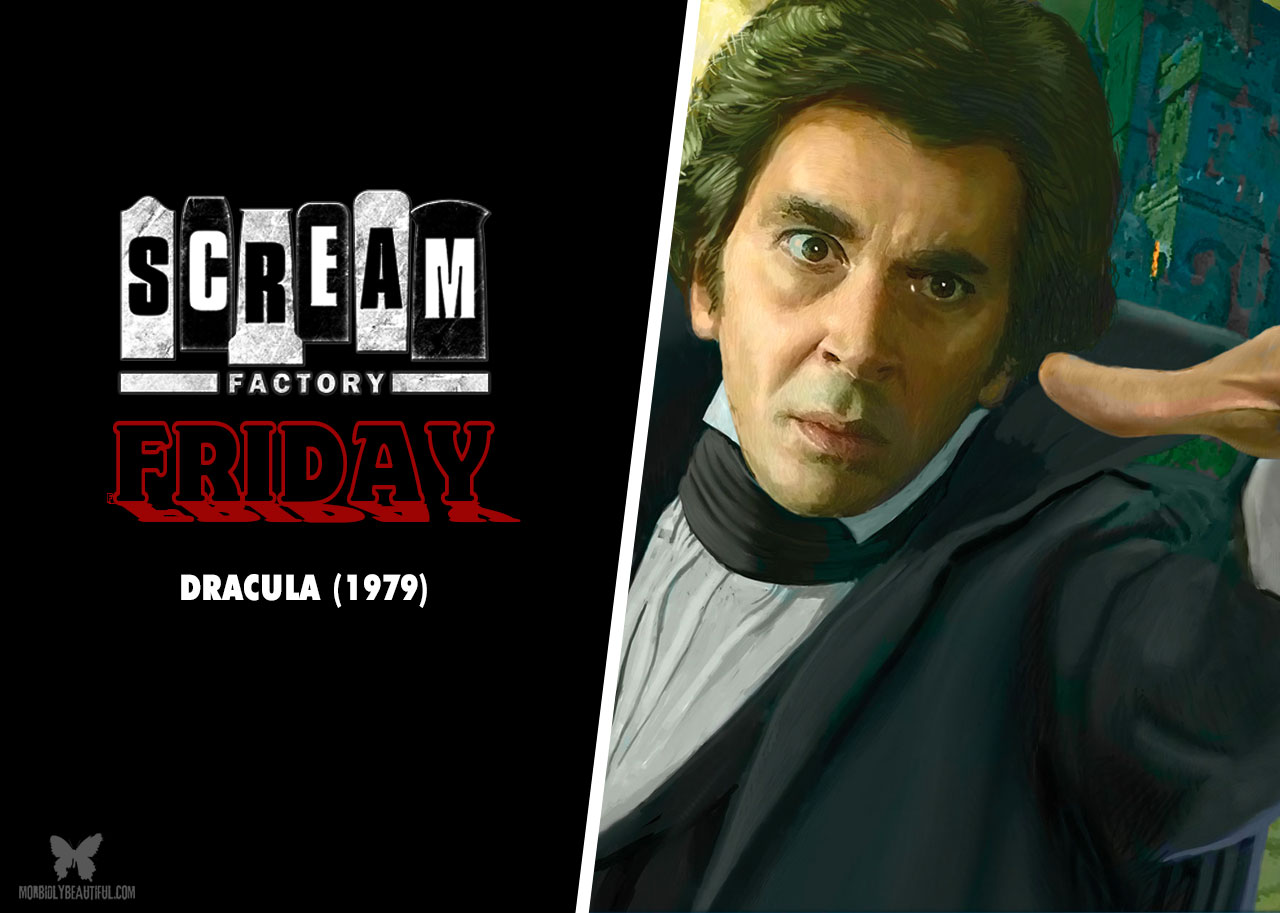
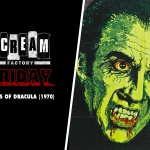
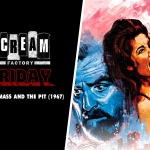
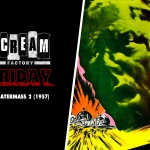


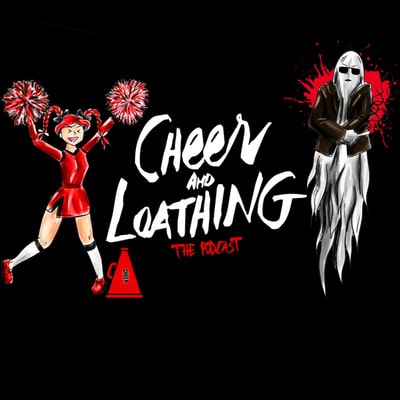
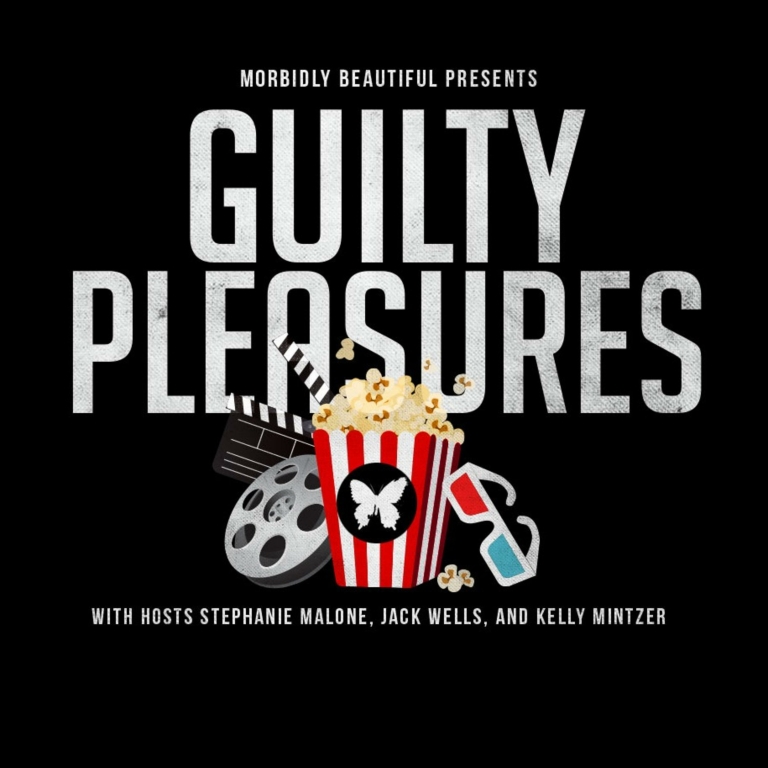

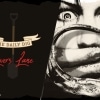

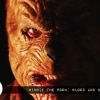
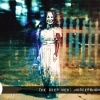
Follow Us!